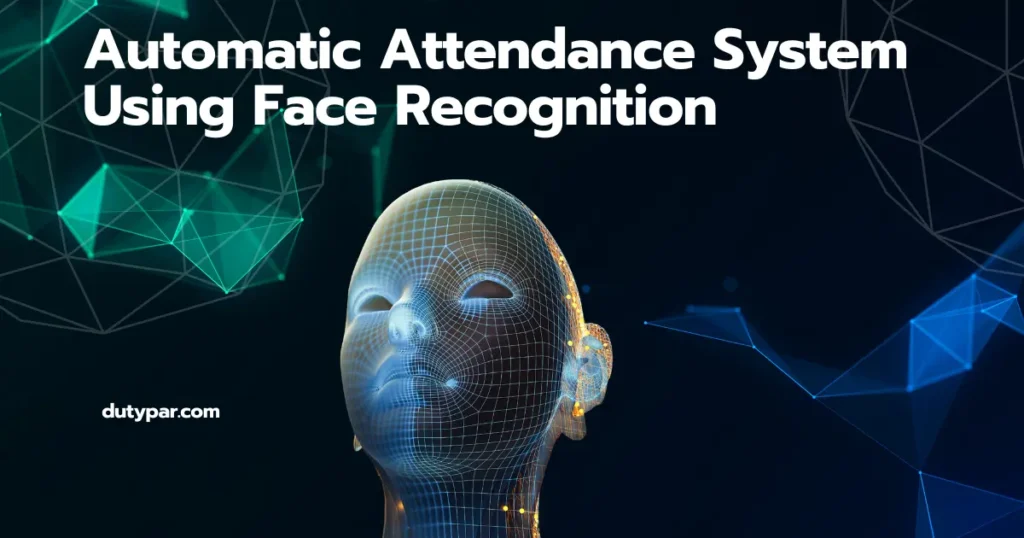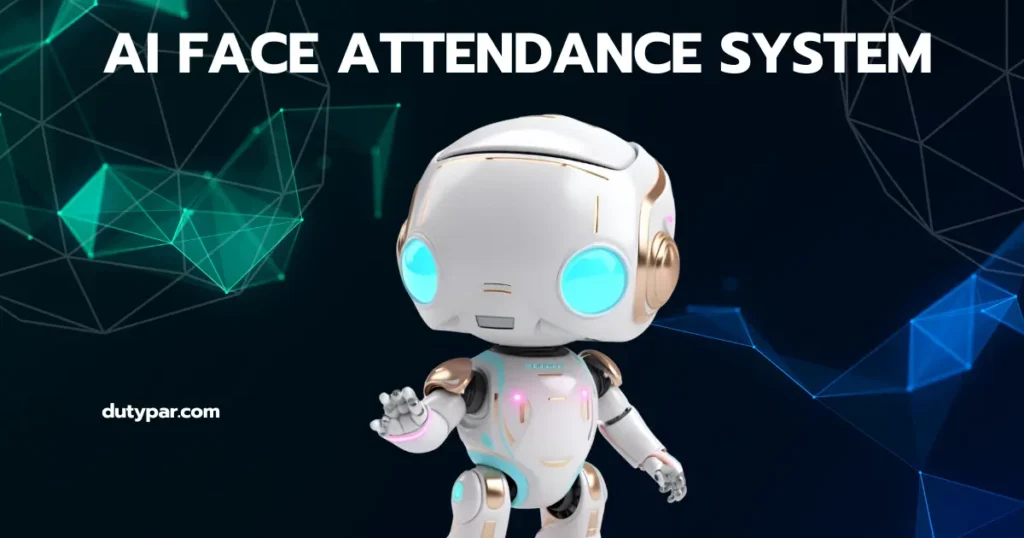Automatic Attendance System Using Face Recognition: The Future of Efficient Attendance Management

Table of contents
- Automatic Attendance System Using Face Recognition: The Future of Efficient Attendance Management
- What is an Automatic Attendance System Using Face Recognition?
- How Does the Automatic Attendance System Using Face Recognition Work?
- Benefits of Using an Automatic Attendance System Using Face Recognition
- Real-World Applications of Automatic Attendance Systems Using Face Recognition
- Challenges and Limitations of Automatic Attendance Systems Using Face Recognition
- Leading Companies Providing Automatic Attendance Systems Using Face Recognition
- Future Prospects of Automatic Attendance Systems Using Face Recognition
- Conclusion
Attendance management has always been an essential part of organizational routines, whether in schools, universities, or workplaces. Traditional methods like manual registers or fingerprint scanners have been effective to some extent but come with their own set of challenges, including errors, time consumption, and hygiene concerns. This is where an automatic attendance system using face recognition comes into play, revolutionizing how attendance is tracked and managed.
What is an Automatic Attendance System Using Face Recognition?
An automatic attendance system using face recognition is a smart and innovative solution that leverages artificial intelligence (AI) and computer vision to mark attendance automatically. It captures and analyzes facial features to identify individuals, ensuring a seamless and contactless process. By using advanced algorithms and machine learning, the system can recognize and verify faces in real-time, making attendance management quick, reliable, and hassle-free.
How Does the Automatic Attendance System Using Face Recognition Work?
Understanding how an automatic attendance system using face recognition works involves knowing the key steps it follows:
- Face Detection: The system first captures an image or a video stream from a camera. It then detects faces within the frame using algorithms that can distinguish facial features from other objects in the background.
- Feature Extraction: Once a face is detected, the system extracts unique features, such as the distance between the eyes, the shape of the nose, or the contour of the lips. These features form a unique facial signature for each individual.
- Face Recognition: The extracted features are then compared against a stored database of facial images. If the features match a face in the database, the system identifies the individual.
- Attendance Marking: Upon successful recognition, the system automatically marks the attendance of the individual and stores the data in a secure database. This process eliminates the need for manual intervention and reduces errors.
Benefits of Using an Automatic Attendance System Using Face Recognition

Adopting an attendance system using face recognition brings several advantages:
- Contactless and Hygienic: Unlike fingerprint-based systems, facial recognition is contactless. This reduces the risk of spreading germs, a significant advantage in maintaining health and safety standards.
- Accuracy and Reliability: The system minimizes human error, ensuring accurate attendance records. The advanced algorithms used in facial recognition make it highly reliable even in diverse environments.
- Time-Saving: Traditional methods of attendance, such as manual registers or biometric systems, can be time-consuming. An automatic attendance system using face recognition speeds up the process, saving valuable time for both employees and employers.
- Enhanced Security: The system not only marks attendance but can also serve as a security measure. It ensures that only authorized individuals have access to specific areas, adding an extra layer of security.
- Easy Integration: The system can integrate seamlessly with existing Human Resource Management Systems (HRMS) and Learning Management Systems (LMS), making it easy for organizations to adapt to this technology.
Real-World Applications of Automatic Attendance Systems Using Face Recognition
The use of an attendance system using face recognition is not limited to just one sector. Its versatility makes it suitable for various fields:
- Educational Institutions: Schools, colleges, and universities use this system to monitor student attendance. It reduces the administrative burden on teachers and ensures accurate records.
- Corporate Offices: In workplaces, this system helps in managing employee attendance, ensuring transparency and accuracy. It also assists in maintaining security by allowing only recognized personnel to enter restricted areas.
- Healthcare Facilities: Hospitals and clinics benefit from contactless attendance, which is crucial in maintaining hygiene standards. This is particularly important in the healthcare sector, where minimizing contact is a priority.
- Government and Public Sector: Various government offices use face recognition for attendance management to ensure that employees are present and accountable.
Challenges and Limitations of Automatic Attendance Systems Using Face Recognition
While the benefits of an automatic attendance system using face recognition are numerous, there are also some challenges that organizations need to consider:
- Privacy Concerns: One of the most significant concerns is the privacy of individuals. Organizations must ensure that the data collected is stored securely and used ethically.
- Dependence on Image Quality: The accuracy of face recognition systems depends heavily on the quality of images captured. Poor lighting, low-resolution cameras, or obstructed faces can lead to errors.
- Initial Setup Costs: The initial investment for setting up an automatic attendance system using face recognition can be high. However, the long-term benefits often outweigh the costs.
- Vulnerability to Spoofing: Though advanced systems are becoming more resilient to spoofing attacks, there is still a risk that someone might try to fool the system using photos or videos.
Leading Companies Providing Automatic Attendance Systems Using Face Recognition

Several companies are at the forefront of developing and providing automatic attendance systems using face recognition. Among them, Indo AI and DutyPar have emerged as key players, offering state-of-the-art solutions tailored for various industries.
- IndoAI: IndoAI offers a robust face recognition attendance system that integrates seamlessly with existing infrastructures. Their technology focuses on accuracy, speed, and security, providing an efficient solution for educational institutions, corporate offices, and healthcare facilities. Indo AI’s system ensures quick identification and verification, making it a reliable choice for organizations.
- DutyPar: DutyPar specializes in smart attendance solutions using face recognition technology. Their systems are user-friendly and designed to cater to organizations of all sizes. DutyPar’s focus on delivering secure and scalable solutions makes them a preferred option for businesses looking to upgrade their attendance management systems.
- Other Notable Companies: Other companies like FaceFirst, Herta Security, and NEC Corporation are also contributing to the development of face recognition technologies for attendance and security purposes. Each of these companies brings unique features and innovations to the table, enhancing the overall landscape of automatic attendance systems.
Future Prospects of Automatic Attendance Systems Using Face Recognition
The future of attendance systems using face recognition looks promising, with continuous advancements in AI and machine learning. Here are some trends we can expect to see:
- Improved Accuracy: With ongoing research and development, the accuracy of face recognition technology will continue to improve. Future systems may overcome current limitations, such as recognizing faces under various lighting conditions or with changes in facial appearance.
- Integration with IoT Devices: Integrating face recognition systems with Internet of Things (IoT) devices will offer enhanced functionalities. For example, smart doors can automatically unlock for recognized individuals, and HVAC systems can adjust settings based on occupancy detected through facial recognition.
- Wider Adoption in Remote Learning and Work: As remote learning and work become more common, automatic attendance systems using face recognition can help institutions and organizations monitor and manage attendance in virtual environments effectively.
- Enhanced Privacy Features: As privacy concerns grow, future systems will likely incorporate more advanced encryption and data protection measures, ensuring that user data remains secure and private.
Conclusion
An automatic attendance system using face recognition is more than just a trend; it is a transformative solution for modern attendance management. With its accuracy, speed, and contactless nature, it is set to replace outdated methods and become the standard across various industries. Companies like Indo AI and DutyPar are leading the way, offering innovative and reliable solutions to meet the needs of today’s organizations.





